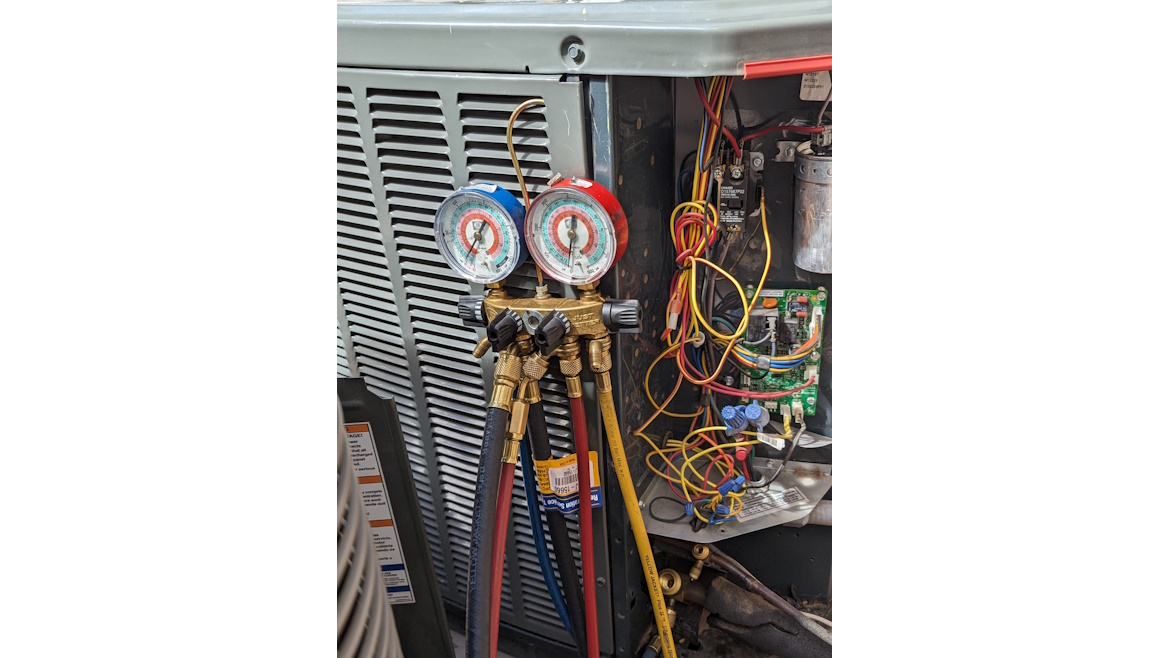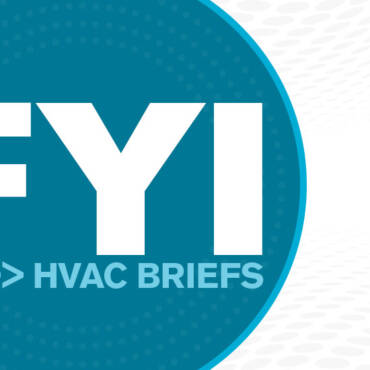In February, I wrote about the Environmental Protection Agency (EPA) program mandating a reduction in the production and use of HFC refrigerants for residential and light commercial HVAC systems. The HFC phasedown program, as it is known, was the first of three programs to be enacted by the EPA under the authority of the AIM Act of 2020. As you may recall, we are currently in the second phase of the HFC phasedown, which limits the production and use of HFCs to 60% of their historic baseline.
In this article, I will cover the second program EPA has enacted, the Technology Transitions program, as it applies to residential and commercial HVAC systems. The final rule for the third program was released in September and concerns maximizing the reclamation of HFCs and minimizing their releases from equipment.
New Regulations
In October 2023, EPA published a final rule restricting the use of high-GWP HFC refrigerants in air conditioning and heat pump products and equipment. These regulations, referred to as the Technology Transitions program, support the HFC phasedown by forcing a transition to next-generation equipment that does not utilize high-GWP HFC refrigerants.
The October rule placed restrictions on both the manufacture and installation of HVAC products and systems beginning on January 1, 2025. EPA later issued an interim final rule in December 2023, which amended the October rule by establishing the following new regulations for residential and light commercial air conditioning and heat pump systems:
- Prohibit the manufacture and import of HVAC products with GWPs >700 on or after January 1, 2025;
- Prohibit the sale, distribution, and export of products with GWPs >700 on or after January 1, 2028;
- Prohibit the manufacture of HVAC system components “for use in a new HVAC system” on or after January 1, 2025; and
- Prohibit the installation of new HVAC systems with GWPs >700 on or after January 1, 2026.
It is important to understand that the new regulations make a distinction between HVAC products and systems. For the purposes of these rules, a product is a functioning self-contained unit when it leaves the factory (e.g., window air conditioning units and packaged terminal air conditioning units). A system is a grouping of HVAC components that are assembled and charged in the field (e.g., split system air conditioners and mini-split air conditioners).
For HVAC products, the final rules restrict the manufacture of these units and restrict the sale, distribution, import, and export of any products containing refrigerants with GWPs >700. The rules are a little different for HVAC systems. To support the servicing of existing HVAC systems that use refrigerants with GWPs >700, components for these systems can still be manufactured; however, no new HVAC systems can be installed using components that have been manufactured after January 1, 2025.
Existing Systems
The new EPA rules do not restrict the use of any existing HVAC products or systems, which means existing systems can continue to operate until the end of their useful life. This includes maintaining and replacing components, as needed. EPA has clarified what is considered to be a new installation versus maintenance by adding the following qualifiers:
- Assembling a system for the first time from new or used components constitutes a new installation;
- Increasing the cooling capacity, in Btuh, of an existing system constitutes a new installation; and
- Replacing 75% or more of evaporators (by number) and 100% of the compressor racks, condensers, and connected evaporator loads of an existing system constitutes a new installation.
Performing any of these actions, and then charging the system to full charge, is considered a new installation of an HVAC system and is subject to all relevant HFC use restrictions.
To aid in determining compliance with the provisions of these rules, EPA requires that all new products and components that are to be used with HFC refrigerants be labeled for such use. The label must indicate the HFC being used along with other information, including the date of manufacture for the product or component. New replacement components that use higher-GWP HFCs must also have a label indicating that they are for servicing existing equipment only.
Looking Ahead
With the EPA HFC phasedown program well underway, state and local governments have been going through the process of reviewing and adopting the latest codes and standards that address A2L refrigerants (the primary alternatives to HFC refrigerants). While the HFC phasedown extends out until 2036, the Technology Transitions program outlined here will act to accelerate the A2L transition timeline for residential and light commercial HVAC systems. Manufacturers of HVAC equipment for residential and light commercial products and systems will no longer be able to manufacture equipment that utilizes HFC refrigerants with GWPs > 700 for use in new HVAC installations after December 31, 2024.
While the sell-through of products will be permitted for three years after that time, the sell-through of new systems will only be allowed for one year, with the higher-GWP HFC systems no longer allowed after December 31, 2025. These critical dates are quickly approaching. The manufacturers of this equipment are already beginning to fill the supply chain with the new A2L refrigerant equipment, and we are now beginning to see it in the marketplace.
It is important for HVAC professionals to take the time now to fully understand the implications of both the HFC phasedown program and the HFC technology transitions program and begin planning for 2025 and the years beyond.
For more information on A2L refrigerants, please check out the International Code Council’s A2L refrigerant “Hot Topics” page, which can be found here: www.iccsafe.org/pmg/a2l-refrigerants-transition/.
Whether you require installation, repair, or maintenance, our technicians will assist you with top-quality service at any time of the day or night. Take comfort in knowing your indoor air quality is the best it can be with MOE heating & cooling services Ontario's solution for heating, air conditioning, and ventilation that’s cooler than the rest.
Contact us to schedule a visit. Our qualified team of technicians, are always ready to help you and guide you for heating and cooling issues. Weather you want to replace an old furnace or install a brand new air conditioner, we are here to help you. Our main office is at Kitchener but we can service most of Ontario's cities
Source link



